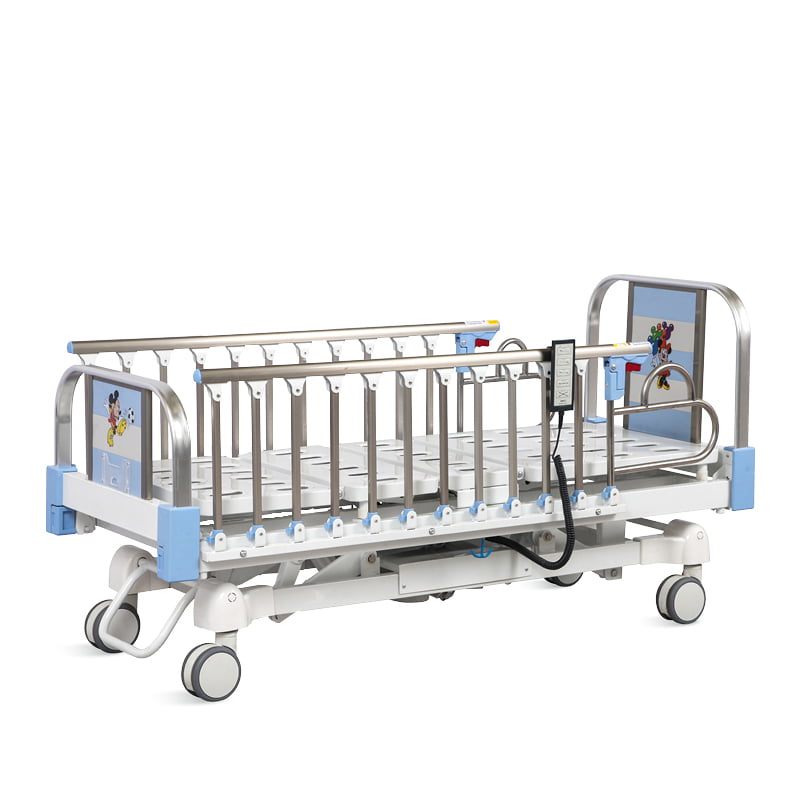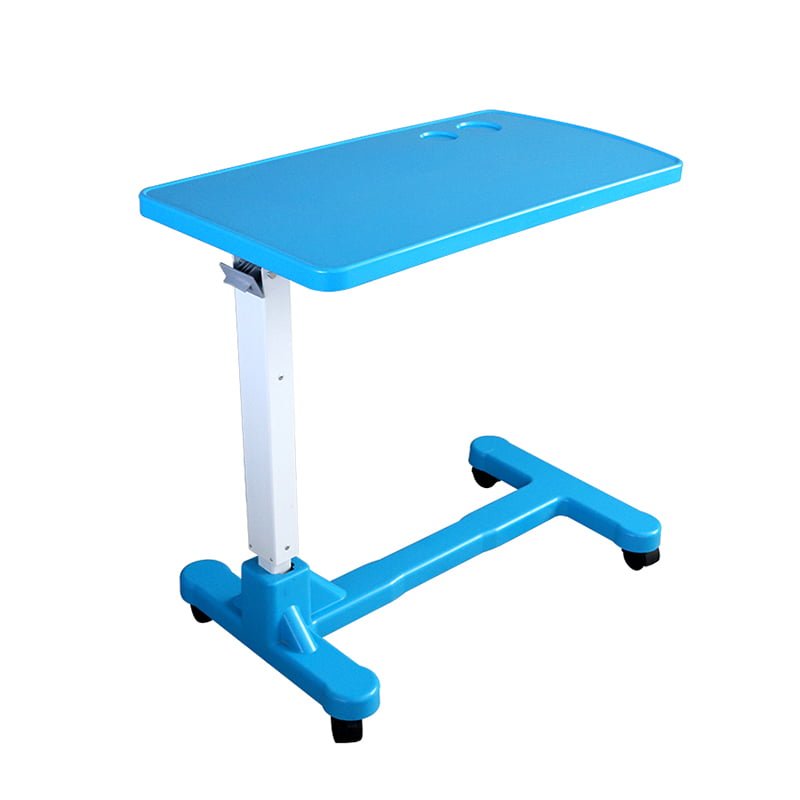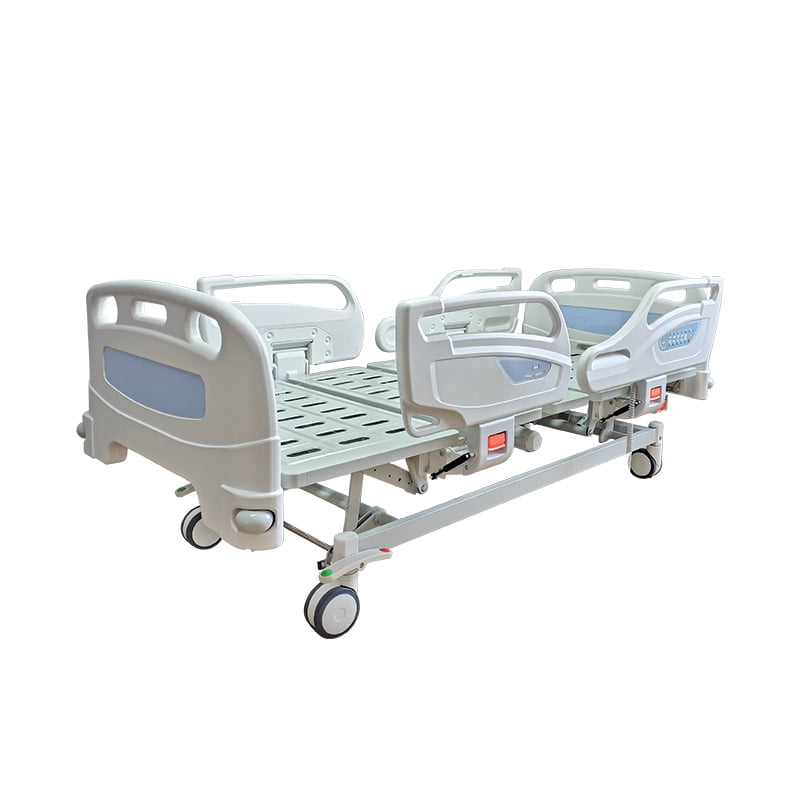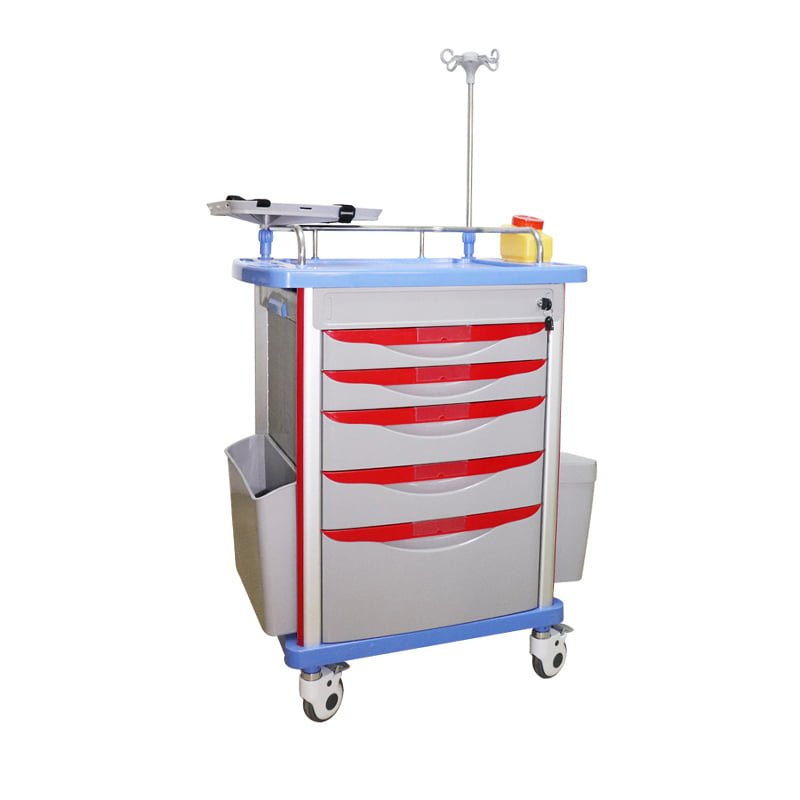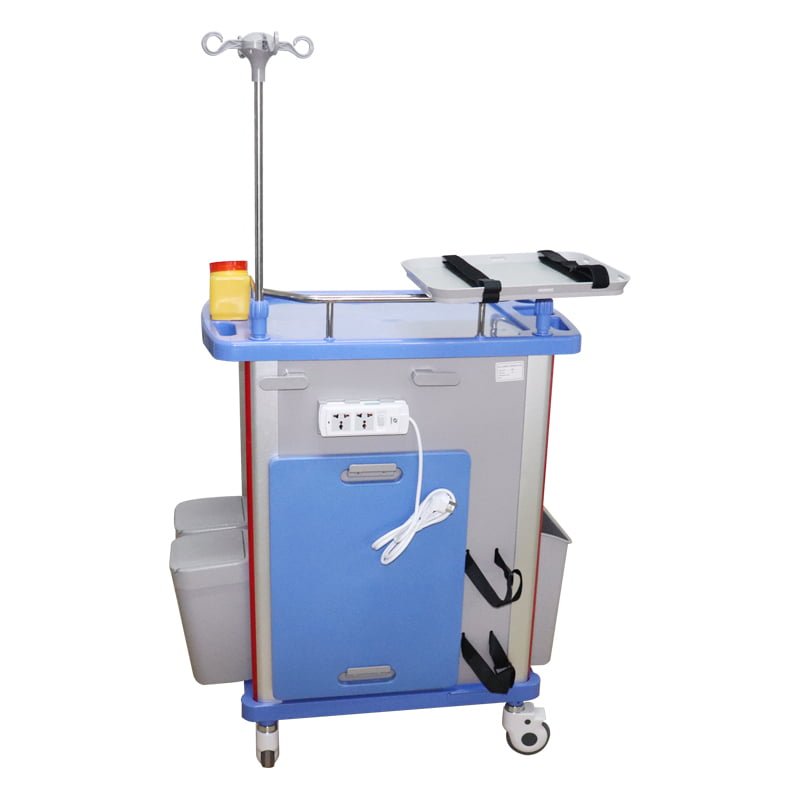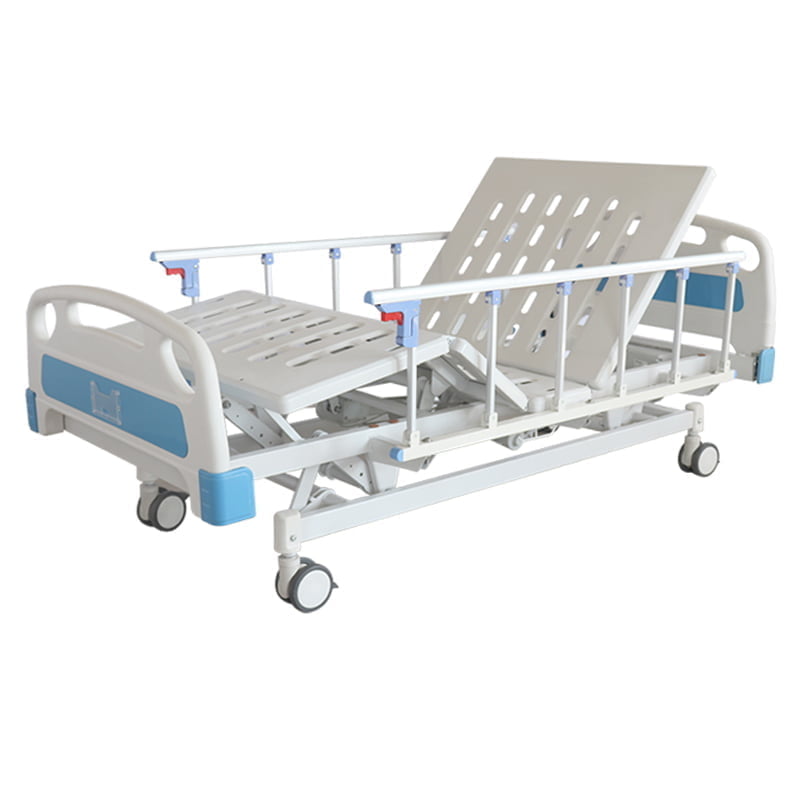
How Many Types of Hospital Beds Are There in ORP MEDICAL?
Hospital beds play a crucial role in ensuring comfort and facilitating recovery for patients in various healthcare settings. ORP MEDICAL provides a wide variety of hospital beds, each specifically designed to meet the unique needs of patients and healthcare environments. We can classify these beds based on their operational mechanisms, functionality, and the clinical environments they serve. In this article, we will explore the different types of hospital beds offered by ORP MEDICAL, categorizing them according to their operating mechanisms, functions, and usage scenarios. By understanding these classifications, healthcare professionals and caregivers can choose the most suitable bed for their specific requirements.
Types of Hospital Beds Based on
Operational Mechanism
Hospitals primarily divide beds into two categories based on their operational mechanism: electric hospital beds and manual hospital beds. Each type offers advantages and is designed to meet specific needs, with the main difference being the mode of adjustment and control.
1. Electric Hospital Beds👈
Electric hospital beds are becoming increasingly popular due to their convenience and ease of use. These beds use electric linear motors, allowing healthcare staff or patients to easily adjust the bed’s position using a control panel or remote. ORP MEDICAL employs high-quality imported motors in their electric beds, ensuring smooth operation with minimal noise. These motors control various bed functions such as adjusting the height, back-rest, and knee-rest positions.
The key benefits of electric hospital beds from ORP MEDICAL include:
- Quiet operation: The imported motors ensure low noise, contributing to a more restful environment for patients.
- Smooth adjustment: Electric beds allow for effortless and precise positioning, minimizing discomfort and reducing the need for physical strain from caregivers.
- Multiple settings: Patients or caregivers can quickly adjust the bed to different positions, such as elevating the head or legs, which enhances patient comfort and facilitates medical procedures.
2. Manual Hospital Beds👈
In settings where electricity is not available or when cost-effectiveness is a priority, manual hospital beds provide a reliable alternative. These beds using hand cranks, typically at the position of foot or side of the bed. Manual beds use physical effort, making them ideal for environments, access to electricity, such as rural areas or during power outages.
Manual hospital beds from ORP MEDICAL offer the following advantages:
- Suitable for non-electric environments: Manual beds can adjust without the need for electricity, making them highly versatile and practical in emergency situations.
- Cost-effective: These beds are typically less expensive than electric models, making them a more affordable option for smaller clinics or temporary medical facilities.
- Reliable in emergencies: Since manual beds do not rely on electricity, they are a dependable solution in scenarios where power supply may be unpredictable.
TIPS:
In ORP MEDICAL product line, models that start with “BE” are electric hospital beds, for easy adjustment and enhanced patient comfort. In contrast, models beginning with “BM“ are manual hospital beds, offering a more traditional approach with hand-operated adjustments. Chooseaccording to your specific needs for convenience and functionality!
Types of Hospital Beds Based on
Functionality
Hospital beds can also divide by the number of adjustable features they offer. ORP MEDICAL provides a range of beds with different functionalities, ranging from basic two-function beds to advanced multi-function beds. Understanding the functionality of these beds can help in selecting the right bed to meet specific patient care requirements.
1. Two-Function Beds
Two-function beds are the most basic type of hospital beds available from ORP MEDICAL. These beds typically offer two essential adjustments: back-rest and knee-rest. They are ideal for patients who need simple adjustments for comfort and basic medical care.
 BM27 Two-Function Hospital Bed👈
BM27 Two-Function Hospital Bed👈
Key features of two-function beds include:
- Back-rest adjustment: This allows the head of the bed raising or lowering, making it easier for patients to sit up or lie down.
- Knee-rest adjustment: This function provides support to the patient’s legs, enhancing comfort and circulation.
2. Three-Function Beds
Three-function beds offer an additional adjustment feature: height adjustment. This added feature allows the bed raising or lowering, which can significantly benefit both the patient and healthcare staff. These beds are particularly useful for procedures where the bed height needs to be adjusted to avoid straining the caregiver’s back.
 BE34 Three-Function Hospital Bed👈
BE34 Three-Function Hospital Bed👈
Key features of three-function beds include:
- Back-rest and knee-rest adjustments: Similar to two-function beds, providing basic comfort for the patient.
- Height adjustment: This allows the entire bed to be raised or lowered, making it easier for caregivers to assist patients and perform medical procedures.
3. Five-Function Beds👈
Five-function beds add further advanced adjustments, including Trendelenburg and reverse Trendelenburg positions. These positions often use in critical care settings to improve patient circulation or to treat conditions such as low blood pressure.
 BE52A Five-Function Hospital Bed👈
BE52A Five-Function Hospital Bed👈
Key features of five-function beds include:
- Back-rest, knee-rest, and height adjustment: Providing comfort and convenience.
- Trendelenburg position: The bed tilts so that the patient’s head is lower than their feet, improving circulation and drainage.
- Reverse Trendelenburg position: This position is the opposite, with the patient’s feet lower than their head, which can help alleviate breathing difficulties or reduce pressure on certain body parts.
4. Multi-Function Beds
Multi-function beds from ORP MEDICAL come with all the features of five-function beds, along with additional customizable options. These beds are ideal for specialized medical needs or long-term care settings.
BER11K3 Multi-Function Hospital Bed👈
Possible extra features (base on five-function) of multi-function beds include:
- Lateral tilt: The bed can tilt side to side, making it easier to reposition patients and reduce the risk of pressure ulcers.
- CPR function: In an emergency, the bed can quickly flatten, providing an immediate surface for resuscitation efforts.
- Customizable features: Multi-function beds can meet specific patient needs, offering a flexible solution for various medical settings.
Types of Hospital Beds Based on
Usage Scenarios
Hospital beds can also classify base on the specific healthcare setting they are designed for. ORP MEDICAL offers beds tailored for wards, intensive care units (ICUs), pediatric care, home care, orthopedic treatment, and gynecological care.
1. Ward Hospital Beds
Ward hospital beds are the standard beds using in general hospital wards. These beds offer basic functionalities, such as back-rest and knee-rest adjustments, to ensure patient comfort during their stay.
2. ICU Beds👈
ICU beds are designed for critically ill patients who require constant monitoring and care. These beds typically feature multiple adjustable functions, including Trendelenburg and reverse Trendelenburg, height adjustment, and lateral tilt, enabling caregivers to respond quickly to changing medical conditions.
3. Pediatric Beds👈
Pediatric beds specifically design for children, offering additional safety features such as side rails to prevent falls. These beds are smaller and more comfortable for younger patients, with child-friendly designs to ease anxiety during their hospital stay.
4. Home Care Beds👈
Home care beds design for patients receiving medical care at home. These beds offer basic adjustments and are often electric for ease of use by non-professional caregivers. They are also designed to be aesthetically pleasing and comfortable in a home environment.

BEWE03 Home Care Bed
5. Orthopedic Traction Beds👈
Orthopedic traction beds are for patients with fractures or musculoskeletal injuries. These beds allow for the application of traction to align bones and relieve pressure on joints, aiding in the healing process.
6. Gynecological Beds👈
Gynecological beds are beds during gynecological exams and procedures. These beds are adjustable to provide the proper positioning for both the patient and the healthcare provider, ensuring comfort and ease during medical examinations or treatments.
Conclusion
ORP MEDICAL offers a wide range of types of hospital beds to meet the diverse needs of patients and healthcare providers. Whether you need an electric bed for convenience, a manual bed for reliability in non-electric environments, or a highly functional bed for specialized care, ORP MEDICAL has the right solution. By understanding the different operational mechanisms, functionalities, and usage scenarios, caregivers can select the most appropriate bed to enhance patient care and comfort.



 BE54 Hospital Bed👈
BE54 Hospital Bed👈 BE56A Electric Hospital Bed👈
BE56A Electric Hospital Bed👈 BM30 Manual Hospital Bed👈
BM30 Manual Hospital Bed👈
 BE50 Ward Hospital Bed👈
BE50 Ward Hospital Bed👈 BEJ5K3 ICU Bed👈
BEJ5K3 ICU Bed👈
 BO40 Orthopedic Traction Bed👈
BO40 Orthopedic Traction Bed👈 BPE03 Gynecological Bed👈
BPE03 Gynecological Bed👈
